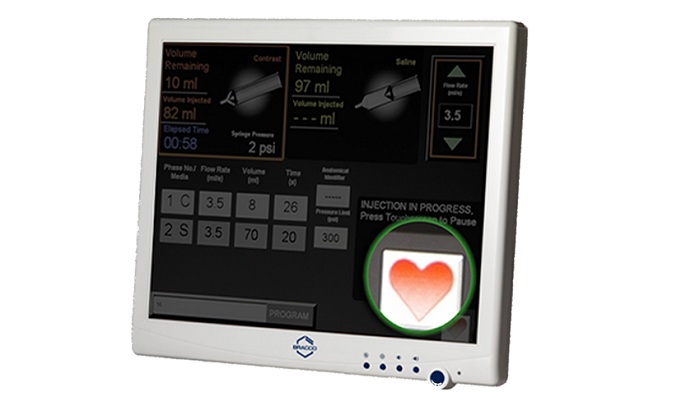Technology advancements are changing consumers’ expectations, driving industries to adapt and evolve, and the healthcare industry is no exception. Healthcare providers are aggressively leveraging new technologies and exploring unique ways to deliver more effective care.
Enhancing patient care is a key priority for HonorHealth Deer Valley Medical Center, a 204-bed, full-service hospital offering extensive inpatient and outpatient general surgery and cardiac surgery and care to communities in the greater Phoenix area.
For more than five years, Deer Valley has used the Empower CTA+ Injector System from Bracco Diagnostics. The smart injector technology is designed for the vascular administration of contrast and flushing media in conjunction with computed tomography (CT) scanning of the body. Deer Valley relies on the efficiency of the Empower CTA+ system to enhance patient care while optimizing imaging capabilities, streamlining workflows and improving efficiencies.
“The Empower CTA+ system is a sturdy piece of equipment. I think it is one of the most reliable injectors I have ever used. I call it Old Faithful,” said Chip Garrett, RTRDT, senior staff technologist at HonorHealth Deer Valley Medical Center.
According to Garrett, the system is very easy to use with a clearly numbered screen layout. “It is very intuitive and gives me full injection control. It is labeled clearly and is very versatile and easy to set up. You press protocol and protocol comes up.”
The system automatically fills syringes to volumes based on the selected protocol and allows for easy customizing, naming and storing specific protocols (up to 100 total).
“With this system, you can optimize protocols for specific exams. I like the fact that you can customize it, and it is easy to customize,” Garrett said. “You can build the protocols into the injector and title them whatever you want. So, if you are doing a pulmonary angiogram, you can build a protocol and title it, Pulmonary Angiogram.”
The system’s various features and extensive safety enhancements include a digital touchscreen at the patient side; integrated and intuitive voice prompts that provide valuable information; protocol selection and management system; auto purge, which purges air out of the syringes to enhance safety; proto fill that automatically fills the syringes with the programmed volume of contrast and saline; a built-in tilt sensor and lock to help reduce the risk of air embolisms to the patient; as well as an on-demand saline advance feature that helps to determine patency and vein integrity.
One unique feature is a saline jump which gives the system the ability to shut down the contrast injection and push saline, minimizing the contrast dose. This also eliminates the need to manually flush the patient IV to clear out the contrast.
According to Garrett, the Empower CTA+ Injector System saline jump is very useful in pulmonary angiograms where the technologist has to scan fast while using as little contrast as possible.
“When I am scanning and I see that the pulmonary artery is already highlighted, I can stop the contrast and jump right over to saline. This saves the patient contrast, which can be a little hard on the kidneys. You have such a narrow window of opportunity, which is variable from patient to patient, so the ability to just jump over to saline after you see the pulmonary artery highlight is a great feature,” he explained.
Another benefit of the saline jump is that it gives the technologist flexibility and improves efficiency. “Let’s say that the injector was preloaded for a larger patient, but a smaller patient was ready first, you can proceed to give that patient a smaller amount of contrast and then jump to saline without having to reload the injector.”
Finally, when it comes to delivering effective and efficient healthcare, reliability is one of the most critical features for any device used in a busy hospital imaging department. System downtime can diminish responsiveness to patients, cause significant operational delays across the organization and interruptions in the delivery of patient care.


















